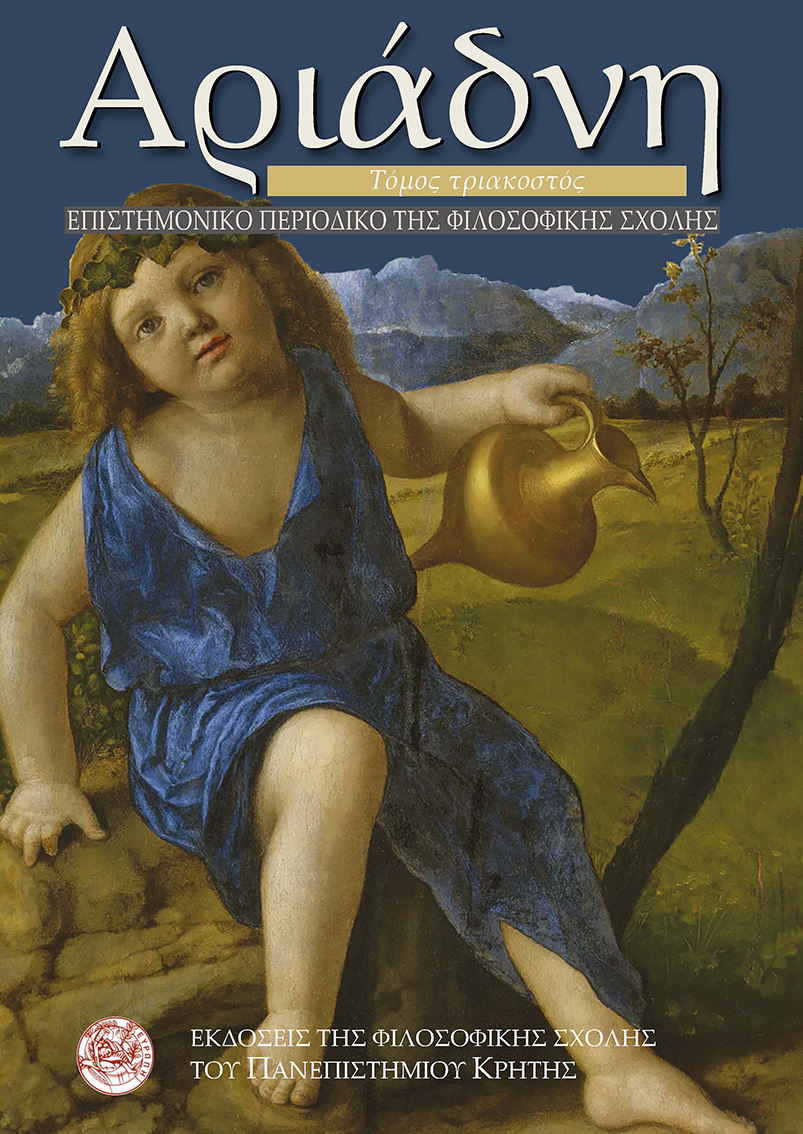Aristotle’s Phantasia and the Problem of Images
DOI:
https://doi.org/10.26248/ariadne.v30i.1886Abstract
In this paper, I argue that phantasmata, which are central to Aristotle’s theory of phantasia, constitute mental images whose function is generally distinct from aisthesis (sense perception). Nevertheless, Aristotle includes, in his discussion of phantasia, the example of the sun appearing a foot across, undoubtedly a case of misperception. If the sun’s false appearance is understood as involving mental images, Aristotle’s supposed direct perceptual realism is undermined. If not, the consistency of the theory of phantasia is called into question, and we must ask why the appearance is attributed to phantasia rather than aisthesis. By examining Aristotle’s arguments for the distinction between aisthesis and phantasia, I argue that this example is consistent with the conception of phantasia in De Anima and with the epistemological concerns underlying its distinction from perception. More specifically, I suggest that we can interpret this example through phantasmata without jeopardizing the realism and credibility of perception, as special circumstances cause aisthesis to malfunction in this case. Finally, I explore the possibility of viewing phantasia as having a broader explanatory role concerning perceptual appearances, a role that may represent a development of Aristotle’s initial theory, though the evidence remains inconclusive.
Downloads
Published
How to Cite
Issue
Section
License

This work is licensed under a Creative Commons Attribution-NonCommercial-ShareAlike 4.0 International License.
Authors retain copyright and grant the journal right of first publication with the work simultaneously licensed under a Creative Commons Attribution-NonCommercial-ShareAlike 4.0 International License that allows others free use of the work for non-commercial purposes as long as the author/s and the journal are attributed properly and the new creations are licensed under identical terms (Creative Commons Attribution-NonCommercial-ShareAlike 4.0 International License).


